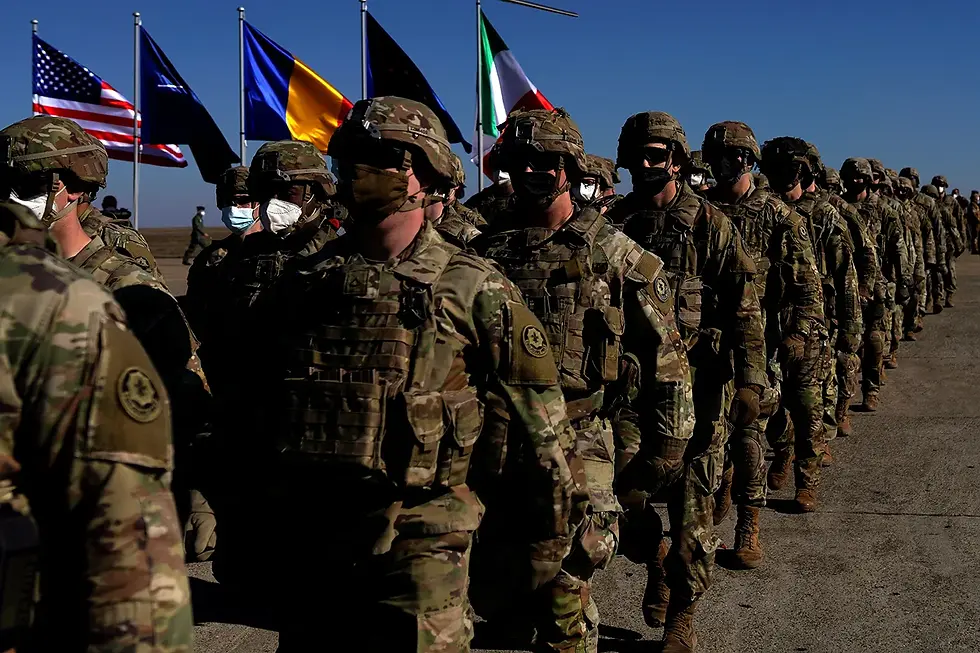Companies are like Companies
- Nathan Decety

- Jan 17, 2021
- 4 min read
Updated: Jan 27, 2021

Consider a company led by a Captain in a major conventional war. At any given time, they have a set number of options they can pursue. The company can defend or attack in a number of ways, and can do multiple activities at the same time. However they can’t simply dissolve into individuals following their own will because they will then be unorganized and potentially described as guerillas – thereby breaking a general rule and definition of conventional fighting. Most importantly, the company fills a major role, it is a cog in the general chain of events that keep the war ongoing and the enemy at bay or on their toes.
It is important that the company execute its assigned duties effectively. If it does not, it loses men. Drags on efficiency and effectiveness also lead to loss of men in the long run (medical services, pay, low morale = desertion, no food = starvation, slow decision making = republicans in the Spanish civil war).
While a company can perform multiple tasks, by being a part of a greater team, it is constrained in its options. For instance, a company on the front of a war will occupy a relatively small expanse of land with given objectives, while other supporting units guard the flank and fulfill other tasks so that our company can fulfill its own mission. At a certain set time, the company can also ill afford to fail. There is rarely a full second company right behind this first company to supply new men should this first company lose a significant number. That is because there will then be a major vulnerability in the reserves if a support company exists and it replenishes our first company. Furthermore if this first company loses 90% of its men, the replacements aren’t rebuilding the first company, the replacements are just a whole new company!
Time is a factor. If the company fails or inefficiently accomplishes its combat tasks in a short time period, these resupply pressures become problematic. If the company lost 90% of its men, but over the course of 3 years, that is logistically acceptable and the flow of new recruits would be sufficient to replace those lost. But if the company lost 90% of its men in only 3 days or 3 weeks, now it is logistically unacceptable.
At a given set time therefore, a company must accomplish what it needs to do well and efficiently and the losses must be minimized. All this is rather mundane of course until we tie in the second piece.
Firms are actually similar to companies. They also face significant pressures for all their actions. Defending their market share needs to be done well, or they will start losing it. Being on the offense – spending on R&D or penetrating a new market – also has important ramifications. Every failure hits confidence in the management team and its workers. They also may start having poor morale and confidence, increasing churn. Their brand suffers with failures and poor morale, reducing the chance that future employees will be competent, while a sinking brand attracts few clients. Cost of capital increases – stock prices dip with every failure – the likelihood of default rises on debt because not enough money is being made to finance the borrowings. If they fail overwhelmingly, like a battlefield company, they will be replaced by a new company instead of being able to raise infinite funds.
There are real consequences if a company makes multiple poor decisions, and it has to focus itself somewhat to a strategy or offering because if it doesn’t, those that have focused more will outcompete it; competitors with a relatively similar amount of resources will be able to dedicate more resources to that project. In this regard therefore, at a specific time, firms are similar to battlefield companies: a set number of choices with major negative outcomes if they fail, and only a certain number of attempts to try again.
Why does this matter? There’s already so much out there about business being like war right? Yes but within this model there are further implications than the relationship of business strategy to war. It means that the same principles of military action facing a combat outfit also apply to a company. Those that are most applicable are the following:
Objective – This is the ultimate purpose of war, to destroy the enemy's ability and will to fight, by directing every military operation toward a clearly defined, decisive and attainable end.
Offensive – Seize, retain, and exploit the initiative. Offensive action is the most effective and decisive way to attain a clearly defined common objective while maintaining freedom of action and achieving decisive results.
Mass – By synchronizing the effects of overwhelming combat power, rather than concentrating forces, at the decisive place and time, a numerically inferior force can achieve decisive results, while limiting exposure to enemy fire.
Economy of Force – This is the opposite of mass. Economy of force is the realization that one must employ all combat power in the most effective and judicious way possible. Every part of the force must have purpose.
Security – You should never permit the enemy to acquire unexpected advantage. Security enhances freedom of action by reducing vulnerability to hostile acts, influence, or surprise. Security results from knowledge of your enemy and solid planning.
Simplicity – Prepare clear, uncomplicated plans and concise orders to ensure their understanding. Everything in war is very simple, but the simple thing is difficult. Other factors being equal, parsimony is to be preferred.
Consider that corporate finance classes teach companies to analyze projects using NPV analysis, and that they should undertake positive NPV projects, these rules suggest a blind NPV approach is perhaps foolish.


תגובות